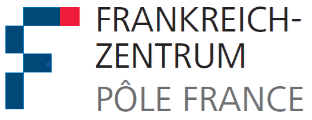Lipid Nanocapsules for Antibiotic Delivery
Lipid Nanocapsules for Antibiotic Delivery
Deutsch-Französischer Diskurs mit
Prof. Dr. Patrick Saulnier, CHU Angers, Centre Hospitalier Universitaire
Bitte beachten - Datum geändert:
Mittwoch, 03.12.2019, 17 Uhr, Campus E8 1, R. 0.27
Gastgeber: Prof. Dr. Claus-Michael Lehr, Biopharmazie und Pharmazeutische Technologie
Abstract zum Vortrag
Resistance to traditional antibiotics is a rapidly increasing problem that in a few years could make infections impossible to treat and bring the state of medical care back to the pre-antibiotic era from the beginning of the last century. Antimicrobial peptides (AMPs) have a huge potential as new therapeutics against infectious diseases as they are less prone to induce resistance due to their fast and non-specific mechanism of action.
The aim of FORMAMP was to explore a number of innovative formulation and delivery strategies based on nanotechnology in order to improve the efficiency and stability of AMPs in clinical development. Functional delivery systems that can be applied directly on the infected site were developed for treatment of infections in skin and burn wounds, as well as lung infections caused by Methicillin-resistant Staphylococcus aureus (MRSA), Pseudomonas aeruginosa and Mycobacterium tuberculosis (MTB). Formulation and delivery strategies to prevent and treat biofilm formation related to these conditions were developed. Different nanoformulation platforms, particularly promising for peptide delivery, controlled release strategies and technologies against proteolytic degradation of peptides were evaluated in the project. These include lipid-based systems such as lipidic nanocapsules, polymer-based structures such as dendrimers and microgels as well as nanostructured mesoporous silica. The possibility to formulate the nanostructured materials into efficient drug delivery systems such as a topical spray or gel and pulmonary aerosol was investigated. The effect of nanoformulated AMPs was evaluated with state-of-the art in vitro models and in vivo models.
This presentation focus on the main results and open a discussion on the suitability of such nanosystems to treat infections.


